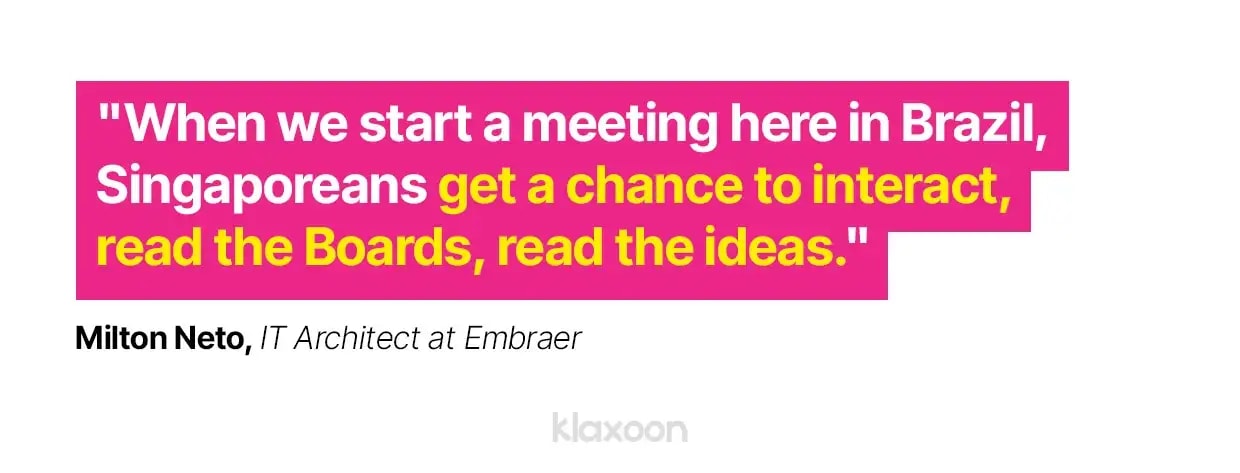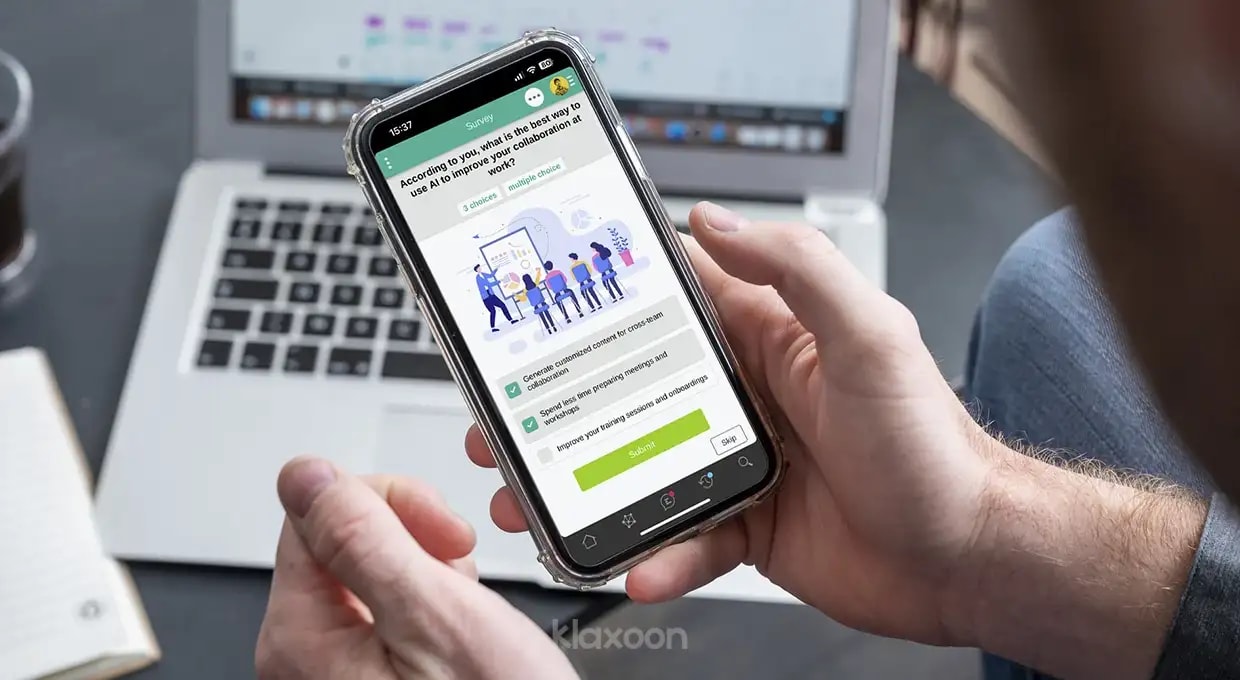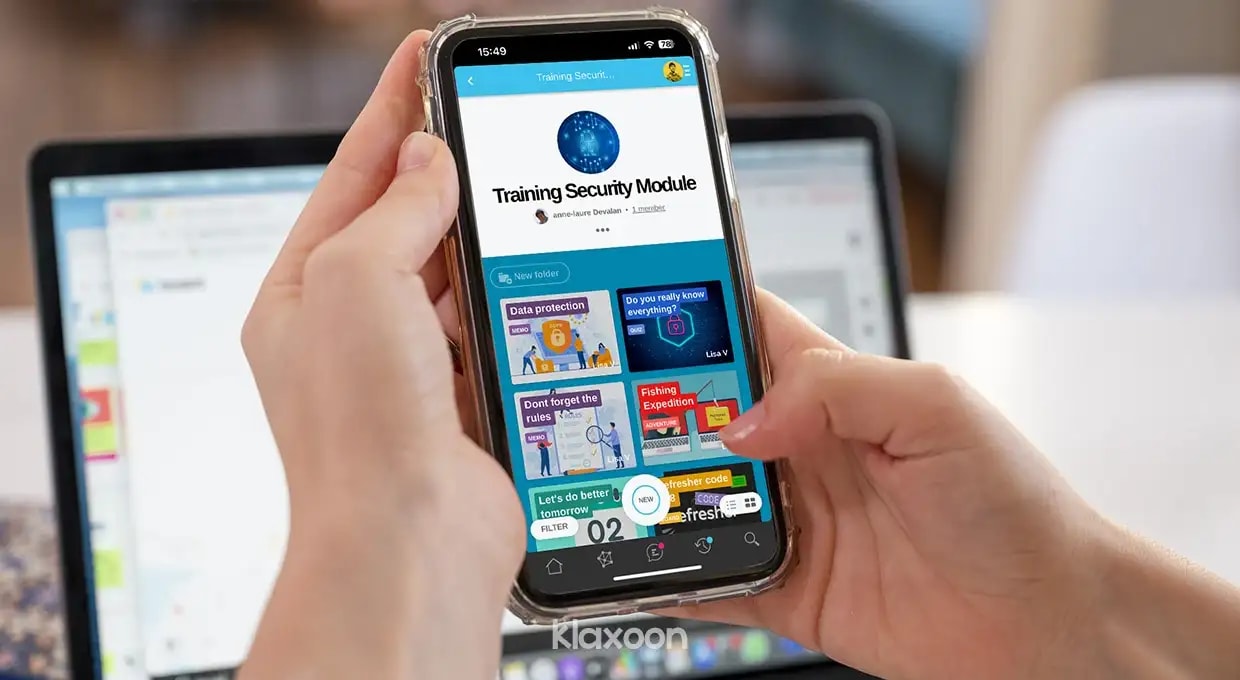Digital learning essentials: The go-to guide for efficient hybrid training
Published on July 30, 2025
In the context of the rapid obsolescence of professional skills and a shortage of talent on the market, Learning & Development (L&D) teams need to rethink their approach to corporate training. They need to create hybrid formats that adapt to the needs of each learner, making the most of face-to-face, distant, synchronous and asynchronous learning.
More than ever, learner engagement is a key factor in accelerating and optimizing the training experience. With collaborative workspaces adapted to hybrid training, you can maximize engagement levels from anywhere, at any time. Visual platforms like Klaxoon enable you to offer personalized content, create an emotional connection, encourage interaction and constructive feedback for better long-term learning retention.
To improve the effectiveness of your digital learning initiatives, it's important to set up a working environment that encourages everyone to get involved, especially at a distance where it can sometimes be more difficult to express oneself. Your training space must emphasize practice and experimentation, which make up 70% of the learning process. It must also enable effective monitoring of knowledge acquisition.
Finally, L&D teams need to evolve towards continuous support and invest in a genuine learning culture which, according to Gallup, can increase company profitability by as much as 11%. The Klaxoon collaborative platform offers a personalized hybrid training experience and facilitates the transition to agile learning.


In training, learner engagement is fundamental to generating better long-term results.


As an example, at Embraer, Milton Neto ensures efficient asynchronous exchanges between teams located thousands of kilometers apart.


Participants can complete the Survey at their own pace after the session, encouraging full and constructive feedback.


In a whiteboard, you can also retrieve participation results directly from your interactive activities.


In a Network, simply organize your training modules visually into private groups.